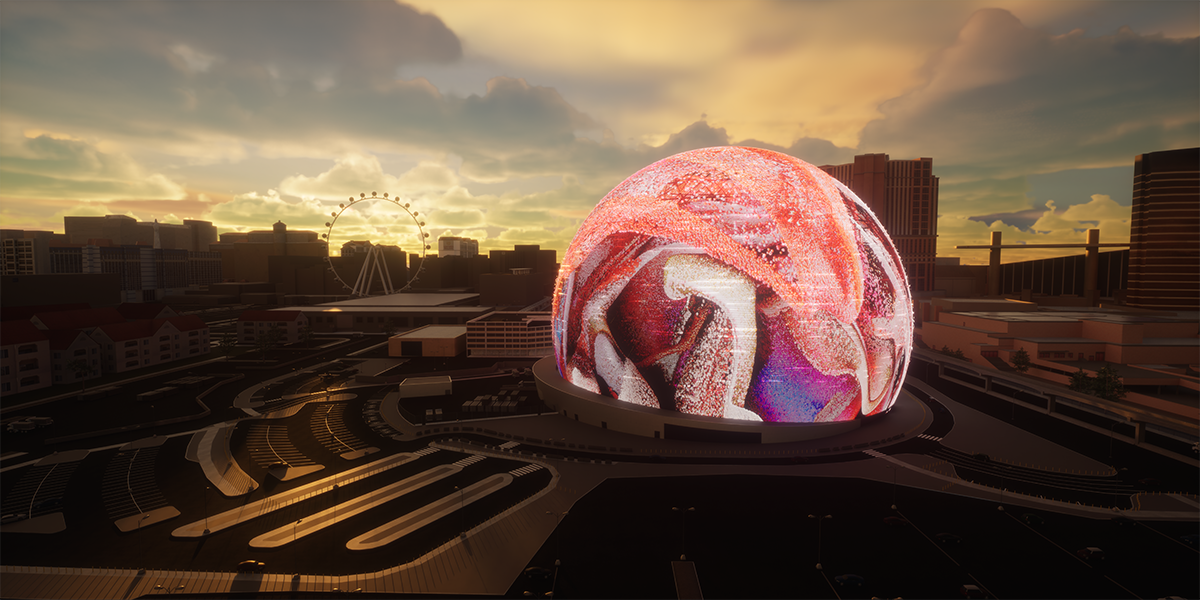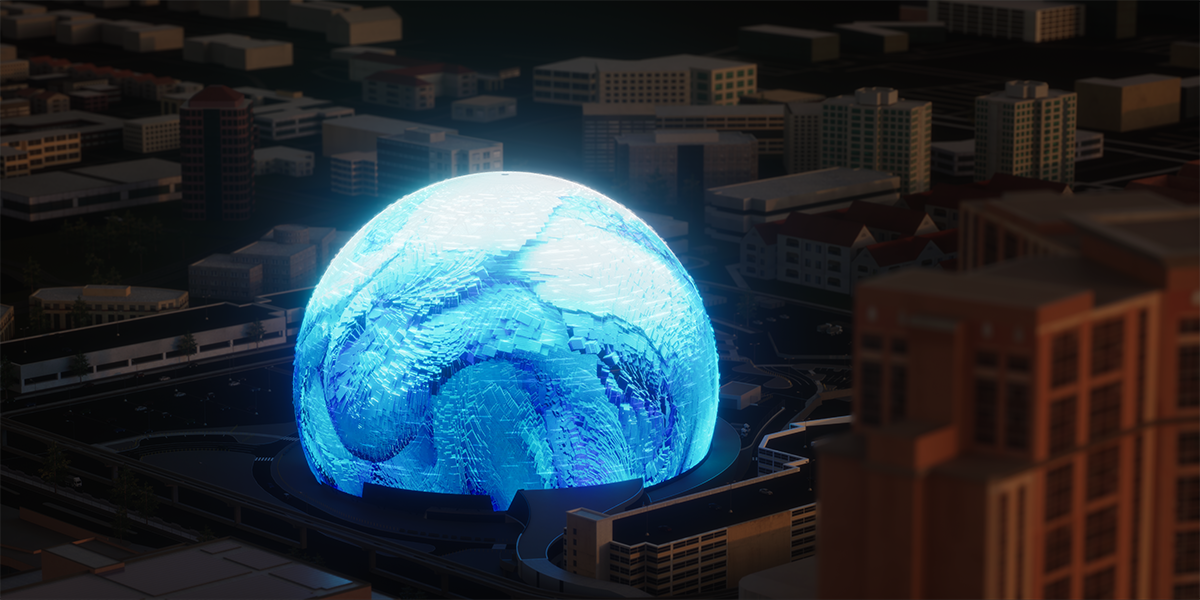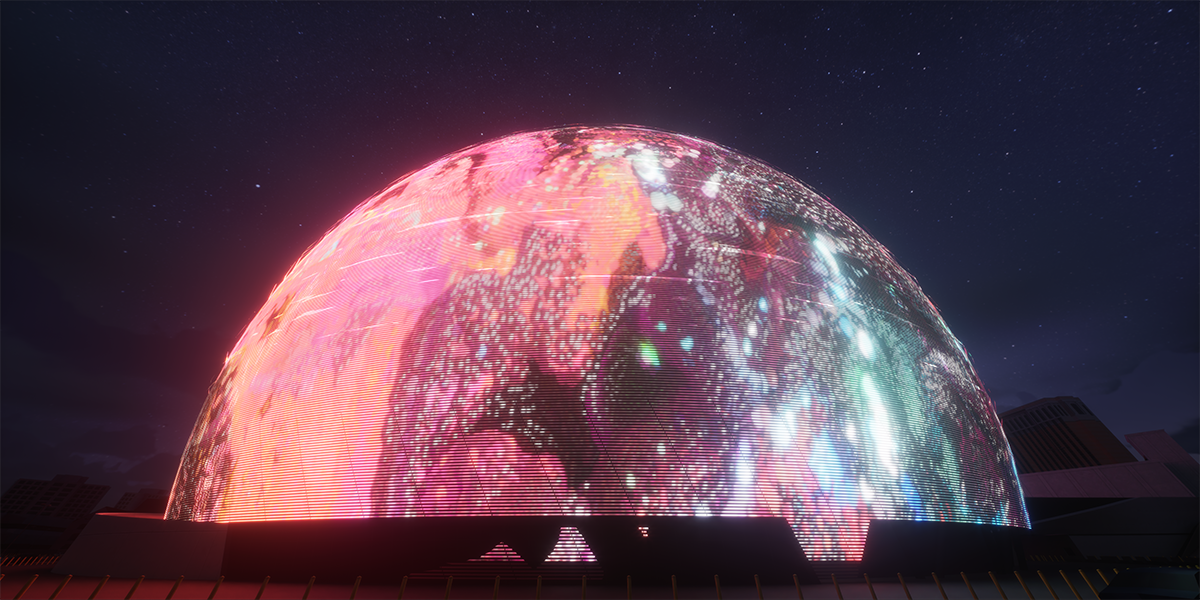
TL;DR
- “Machine Hallucinations: Sphere” is an immersive digital experience projected onto the Las Vegas Sphere featuring dynamic abstract imagery of space and nature.
- Artist Refik Anadol uses data taken from seven years of his “Mission Hallucination” series, and merges them into an equirectangular projection technique to make two different works.
- Anadol likened the process to how Claude Monet was “inspired by the atmosphere and became this incredible impressionist painter.”
READ MORE: The latest canvas for Refik Anadol’s AI-generated art? The new Sphere in Las Vegas (Los Angeles Times)
“This is one of the most Blade Runner moments ever,” media artist Refik Anadol says of his AI-generated animation wrapping the outside of the Las Vegas Sphere. “A science fiction moment that, finally, merges media arts and architecture, embedding technology into a physical environment that exists in the real world.”
“Machine Hallucinations” debuted on September 1, and will run through New Years Eve. The piece, like other works by Anadol, uses publicly available data and machine learning algorithms to create large-scale animated abstractions.
Anadol and his team created “two chapters,” or two versions of the work, that run one after the other, repeatedly, using dynamic programming. “Meaning they play at different speeds, with different forms, colors and shapes each time. It’s generative art,” Anadol told Deborah Vankin at the Los Angeles Times.
The first “chapter” uses about 1.1 million publicly available images taken by satellites and spacecraft, including from the International Space Station and NASA’s Hubble telescope. The AI transforms these beautiful images of the Earth, the universe, their colors, and their forms into what Anadol calls “data pigments” to create an animated image that morphs organically over time.
In “Machine Hallucinations: Nature,” Anadol uses 300 million publicly available photographs of flora and fauna to create a different form of “pigment.” These natural blocks are then animated by data of the wind and gust speed, as well as precipitation and air pressure, all captured from sensors in Las Vegas. Speaking to Jesus Diaz at Fast Company, Anadol likened the process to how Claude Monet was “inspired by the atmosphere and became this incredible impressionist painter.”
Anadol has previously projected his artwork onto notable architectural works like Frank Gehry’s Walt Disney Concert Hall and Antoni Gaudí’s Casa Battló.
For the Sphere (or rather the Exosphere, since it is on the outside of the building) the artist had to deploy a totally new projection mapping technique and rebuild his AI models. He explained to Diaz that his studio applied his real-time generated AI artwork to something called an equidistant cylindrical projection — a type of model that is used to make maps from spheres like the Earth. With the map in hand, a project can then wrap to the sphere.
READ MORE: Refik Anadol just turned the Las Vegas Sphere into the world’s largest AI artwork (Fast Company)
“To me, it’s questioning reality,” he added to Vankin. “[It’s] this incredible architectural form in public urban space and this incredible art form. We’re used to canvas and sculpture and paintings and video, but this time, the whole building is a canvas — and not one with corners. It’s challenging our perceptions. It’s a really powerful statement and experiment reinterpreting the limits of our understanding of what is a canvas.”
Concurrent with “Machine Hallucinations,” the rock band U2 is in the middle of a multi-date residency inside the 18,000 seat stadia.







